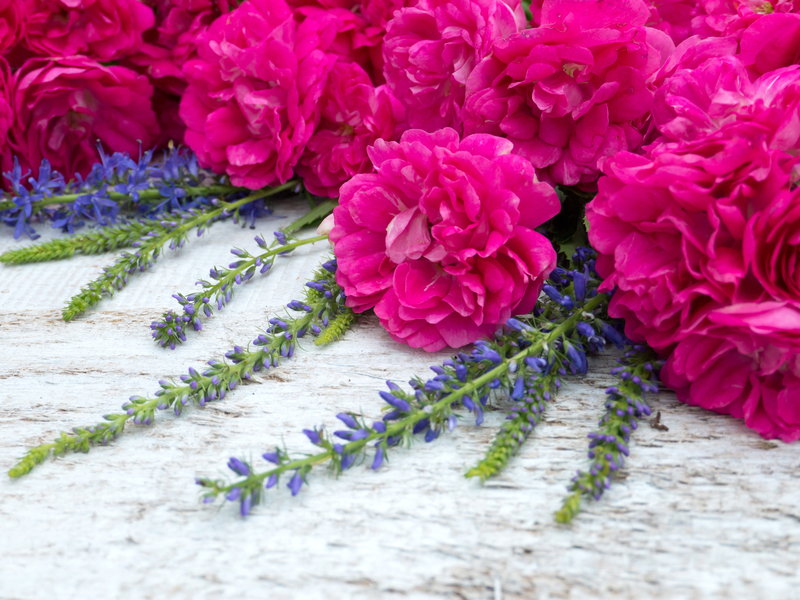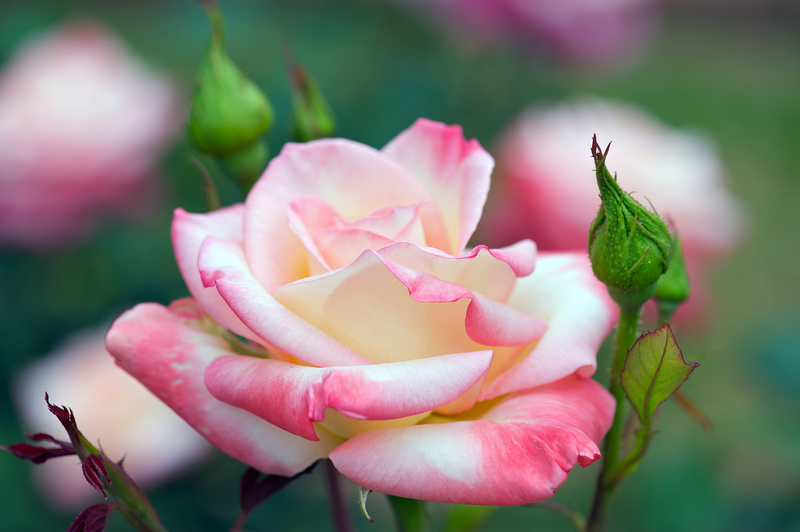Sustaining the Beauty of Your Orchids
Posted on 11/09/2025
Sustaining the Beauty of Your Orchids: A Comprehensive Guide
Orchids are renowned for their exquisite beauty, unparalleled variety, and remarkable resilience. However, to truly sustain the allure of your orchids and ensure their long-term health, a nuanced approach is necessary. This detailed guide will explore practical strategies for sustaining the beauty of your orchids, helping both novice and seasoned growers nurture vibrant, thriving plants year after year.

Understanding Your Orchids: The Foundation of Orchid Care
The first step in sustaining the beauty of your orchid plants is understanding the unique biology and needs of these fascinating flowers. Orchids, a member of the Orchidaceae family, are found in diverse environments worldwide. Whether you have a showy Phalaenopsis, a dainty Dendrobium, or an exotic Cattleya, their requirements for optimal growth and beauty can vary.
- Epiphytic orchids (like most Phalaenopsis, Cattleya, and Dendrobium) grow on trees and need excellent airflow and drainage.
- Terrestrial orchids (such as some Paphiopedilum) grow in soil and require a different substrate and watering schedule.
Recognizing your orchid's natural habitat and growth pattern provides invaluable clues for providing the right care. This knowledge lays the groundwork for maintaining the stunning beauty of orchids in your home or garden.
Optimizing Light Conditions for Thriving Orchids
Light is a critical factor in orchid health and flower production. Too little light may cause dull leaves and no blooms, while excessive light can scorch the foliage.
Finding the Right Balance
- Phalaenopsis orchids: Prefer bright, indirect light. East or west-facing windows are ideal.
- Cattleyas and Vandas: Thrive in slightly higher light, such as a south-facing window filtered with sheer curtains.
- Oncidiums and Dendrobiums: Require medium to strong indirect light.
Pro tip: Observe your orchid's leaves. Healthy leaves are typically bright green. Yellowing may indicate too much sun, while very dark green leaves suggest inadequate light. By ensuring proper lighting, you'll be taking a major step towards sustaining the radiant beauty of your orchids.
Watering Orchids for Lasting Beauty
Many orchid lovers inadvertently harm their plants by over-watering or under-watering, both of which can cause root damage and diminish a plant's beauty.
Mastering the Art of Orchid Watering
- Check the media: Always let the potting medium start to dry out before watering again. Stick your finger into the medium a couple of inches deep; if it feels dry, it's time to water.
- Water thoroughly: Drench the roots until water runs through the drainage holes, ensuring uniform hydration.
- Drainage is key: Excess water must escape freely. Use pots with holes or specialized orchid pots.
- Adjust by season: Orchids need less water in winter when growth slows, and more when days are longer and warmer.
Remember, consistently moist but not soggy roots contribute significantly to the ongoing beauty and health of orchids.
Fertilizing Orchids: A Recipe for Continuous Blooms
Regular feeding supports lush leaves and beautiful blooms. Orchids have unique nutrient needs, making it essential to use the right fertilizer and schedule.
Tips for Effective Fertilization
- Use specialized orchid fertilizer with a balanced formula (like 20-20-20) or one formulated for blooming (higher in phosphorus).
- Fertilize weakly, weekly: Dilute the fertilizer to one-quarter strength and apply every week during active growth periods (spring and summer); reduce frequency during winter dormancy.
- Flush the medium once a month with plain water to prevent salt build-up, which can harm roots and decrease the visual appeal of your orchid.
Careful fertilization not only encourages stunning flowers but also fortifies your orchids, sustaining their beauty for seasons to come.
Humidity and Air Circulation: The Unsung Heroes
Orchids flourish in environments with 40-70% humidity and benefit significantly from fresh air movement.
- Humidify air: Use a humidity tray filled with water and pebbles; the evaporation boosts moisture levels. Alternatively, use a room humidifier.
- Promote airflow: Place a small fan near your plants to prevent stagnant air and discourage fungal issues.
- Group plants together to increase local humidity through natural transpiration.
Balancing humidity and airflow will help maintain orchid color, vibrancy, and resistance to pests and diseases.
Repotting Orchids: Essential for Long-Term Beauty
Repotting is vital for sustaining healthy and attractive orchids. Over time, potting media compacts and decomposes, suffocating roots and reducing drainage.
When and How to Repot
- Repot every 1-2 years, ideally after blooming or when new root growth begins.
- Use a high-quality orchid mix, usually bark-based, for epiphytic orchids; for terrestrials, opt for specialized blends.
- Trim dead roots with sterile scissors, and ensure the new container offers ample drainage.
Routine repotting revitalizes root systems and refreshes the medium, directly contributing to the longevity and beauty of your orchid collection.
Orchid Pruning and Grooming: Enhancing Natural Elegance
Maintaining aesthetic appeal involves occasional pruning, cleaning, and staking of your orchids.
- Remove dead or yellowed leaves to prevent disease and enhance visual appeal.
- Trim spent flower spikes if they brown, to direct energy to roots and leaves.
- Stake flower spikes gently to display blooms attractively and reduce breakage.
Regular grooming sessions not only freshen up the appearance of your plants but also allow for a closer inspection, encouraging early detection of issues that could threaten your orchids' beauty.
Detecting and Treating Orchid Pests and Diseases
Pests and diseases can tarnish the gorgeous allure of your orchids if not addressed promptly.
Common Orchid Pests
- Aphids: These small insects cluster on new growth. Remove with a soft brush or a gentle spray of water.
- Mealybugs: White cottony patches on leaves or roots. Dab with alcohol-soaked cotton swabs.
- Spider mites: Fine webbing and stippled leaves. Increase humidity and use insecticidal soap sparingly.
Orchid Diseases and Prevention
- Root rot: Caused by overwatering and poor drainage. Remove infected roots and repot.
- Leaf spot fungi: Improve air circulation and avoid water on leaves.
- Viral infections: While less common, these can distort flowers--remove and destroy infected plants to protect others.
Vigilance, early detection, and intervention are key to preserving the unblemished splendor of your orchids.
Encouraging Continuous Orchid Blooms
Many growers dream of year-round orchid flowers. While each variety has a natural bloom cycle, proper care can extend flowering and encourage reblooming.
- Some orchids, like Phalaenopsis, may bloom multiple times a year if kept healthy and provided with occasional temperature drops at night.
- After initial blooms fade, cut the spike above a healthy node to encourage new flower branches.
- Maintain steady routines: Consistency with light, water, feeding, and humidity encourages ongoing blooms and maintains the remarkable orchid display.
What About Outdoor Orchids?
In frost-free regions, some enthusiasts grow orchids outdoors. These plants may require extra shielding from direct sun, wind, and rain. Watch temperature extremes and pests, and bring plants indoors at the first sign of cold weather.

Long-Term Strategies for Sustaining the Beauty of Orchids
The enduring beauty of your orchid collection depends on three pillars: consistency, observation, and adaptation.
- Consistency: Develop routines for watering, feeding, repotting, and cleaning.
- Observation: Subtle shifts in color, texture, or growth signal opportunities to improve care before problems develop.
- Adaptation: As seasons change or new orchids join your collection, adjust care techniques to suit evolving needs.
The result is not only sustained orchid health but also the ongoing reward of witnessing your orchids flourish, season after season.
Conclusion: Celebrate the Art of Sustaining Your Orchid's Beauty
Orchids reward attentive care with enduring beauty, enchanting blooms, and captivating foliage. By adopting informed practices--from correct watering and lighting to vigilant pest control and timely repotting--you ensure the lasting splendor of your orchids. With patience, curiosity, and these science-backed strategies, anyone can master the art of sustaining the beauty of their orchids and enjoy their vibrant charm for years to come.
Continue your orchid growing journey with the awareness that every leaf, bloom, and root is a testament to your dedication. Your investment in their care will be repaid with thriving plants and a home filled with natural beauty.
Key Takeaways for Sustaining Orchid Beauty:
- Know your orchid species.
- Provide appropriate light and humidity.
- Water and fertilize consistently, but never to excess.
- Repot every 1-2 years to maintain robust root systems.
- Keep an eye out for signs of stress, pests, or disease.
- Prune and groom for a fresh, elegant appearance.
- Enjoy the process and watch your orchids' beauty last a lifetime!
For more expert tips on orchid care and sustainability, bookmark this guide and become an orchid whisperer today.

